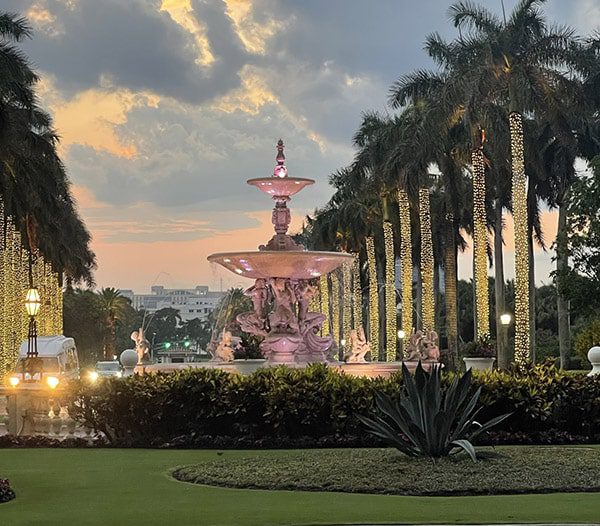The Florida Land Boom of the 1920s
The Birth of a Destination
Palm Beach County, with its beautiful coastline and tropical climate, has always been a prime destination for those seeking paradise on earth. In the early 20th century, this idyllic region saw an unprecedented land boom that transformed it into a hub of wealth, luxury, and extravagance.
In this blog, we’ll explore the Palm Beach County land boom of the 1920s, the opulent structures that arose from it, and the big names that left an indelible mark on this Floridian paradise.
The Birth of a Dream: The Florida Land Boom of the 1920s
The 1920s were a time of great economic prosperity and optimism in the United States. As the nation basked in the post-World War I glow, the allure of Florida’s palm-fringed shores and sunny skies beckoned to the wealthy elite of the North. With this influx of affluence came the Florida land boom, and Palm Beach County was at its epicenter.
The lure of quick riches prompted speculative buying and the subdivision of large land tracts. Celebrities, entrepreneurs, and socialites all clamored to stake their claims in this burgeoning paradise. With their wealth and vision, they would leave an indelible mark on the landscape.

Big Names and Their Extravagant Estates
Henry Flagler, the visionary behind the Florida East Coast Railway, was one of the first big names to shape Palm Beach County’s destiny. His luxurious Royal Poinciana Hotel, opened in 1894, drew the wealthiest individuals to Palm Beach. This opulent hotel set the standard for luxury and laid the foundation for the region’s reputation as a playground for the rich.
Addison Mizner’s Architectural Masterpieces
Another luminary of the Palm Beach County land boom was Addison Mizner, a prolific architect and visionary. His Spanish-Mediterranean Revival architectural style became synonymous with the region’s opulence. Mizner’s influence can be seen in numerous estates and structures throughout the area, including the exclusive Everglades Club.
Mar-a-Lago Donald Trump’s Piece of Paradise
Fast-forward to more recent times, and one name stands out prominently: Donald Trump. In 1985, Trump purchased the Mar-a-Lago estate in Palm Beach, which had once belonged to cereal heiress Marjorie Merriweather Post. Today, Mar-a-Lago is not only a luxurious private club but also served as Trump’s Winter White House during his presidency.
Whitehall The Vanderbilt Legacy
Whitehall, the grand estate built by the Vanderbilts, is another emblematic structure from the land boom era. It was constructed by Henry Flagler for his third wife, Mary Lily Kenan Flagler, and subsequently purchased by Cornelius Vanderbilt II. Today, Whitehall is the Flagler Museum and a testament to the Gilded Age’s extravagance.
The Architectural Marvels of Palm Beach County
The land boom in Palm Beach County led to the creation of some of the most stunning architectural marvels in the United States. Here are a few notable examples:
The Breakers Hotel
Originally constructed by Henry Flagler in 1896 and later rebuilt in its present form after a fire in 1925, The Breakers Hotel is a shining jewel of Palm Beach. With its Italian Renaissance-style architecture and opulent interiors, this luxury resort continues to attract elite guests from around the world.
Mizner Park The Heart of Boca Raton
Addison Mizner’s vision also extended to Boca Raton, where he played a pivotal role in designing its downtown area. Mizner Park, with its Mediterranean-inspired architecture, lush landscaping, and upscale boutiques, has become the cultural and commercial center of the city.
The Biltmore Hotel Coral Gables Gem
While technically not in Palm Beach County, the Biltmore Hotel in Coral Gables deserves mention for its role in Florida’s land boom. Designed by George Merrick, this historic hotel is a prime example of the Mediterranean Revival style and continues to captivate visitors with its grandeur.
The End of an Era
As quickly as the land boom had begun, it came to a sudden and devastating end. The Great Miami Hurricane of 1926, followed by the stock market crash of 1929, resulted in the collapse of the Florida land boom. Many fortunes were wiped out, and numerous grand projects were left incomplete.
However, the legacy of this era lives on. Palm Beach County is still home to some of the most affluent neighborhoods in the United States and the world, and the architectural marvels built during the boom continue to captivate residents and tourists alike.





